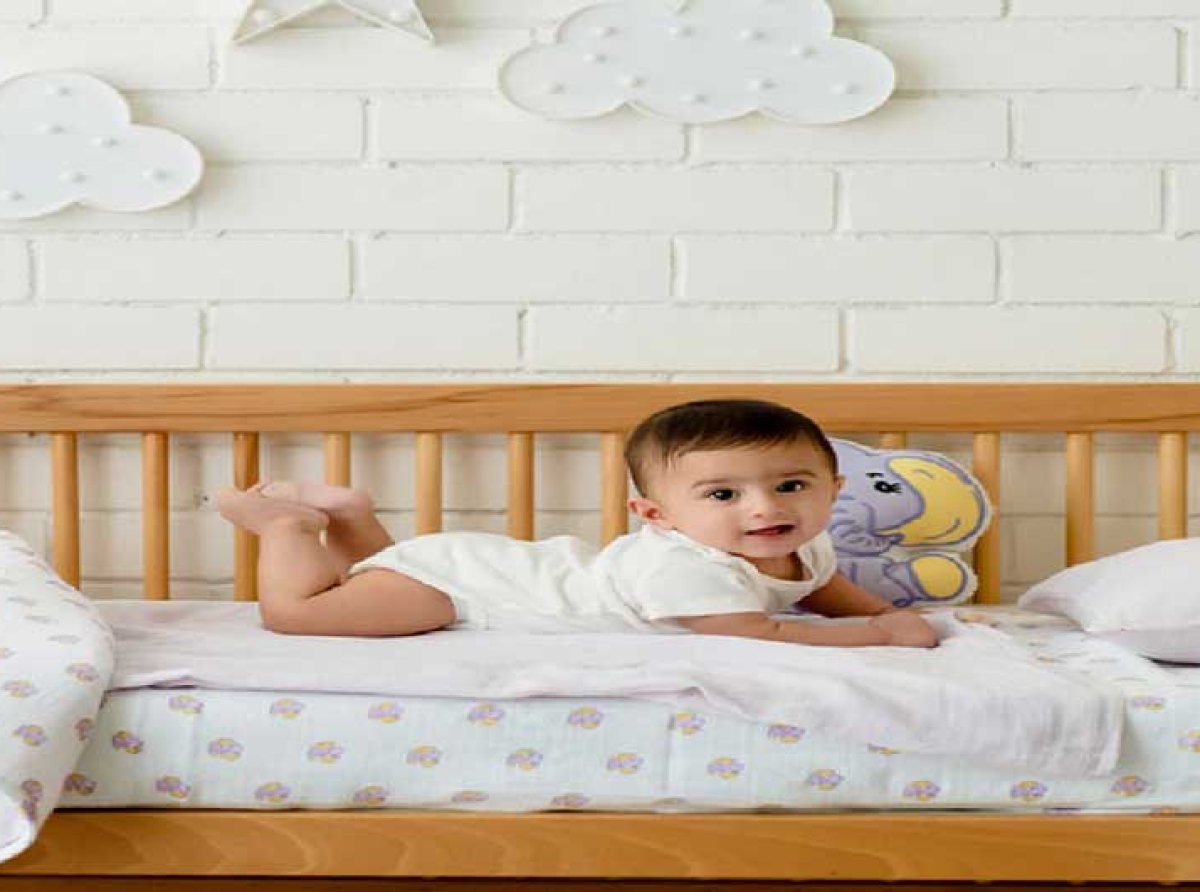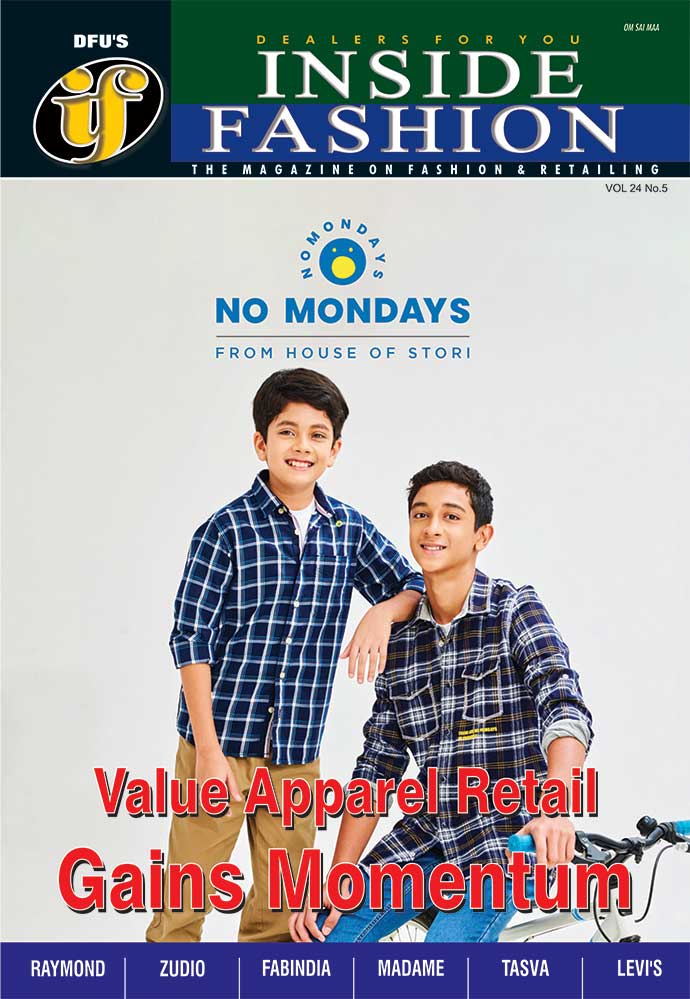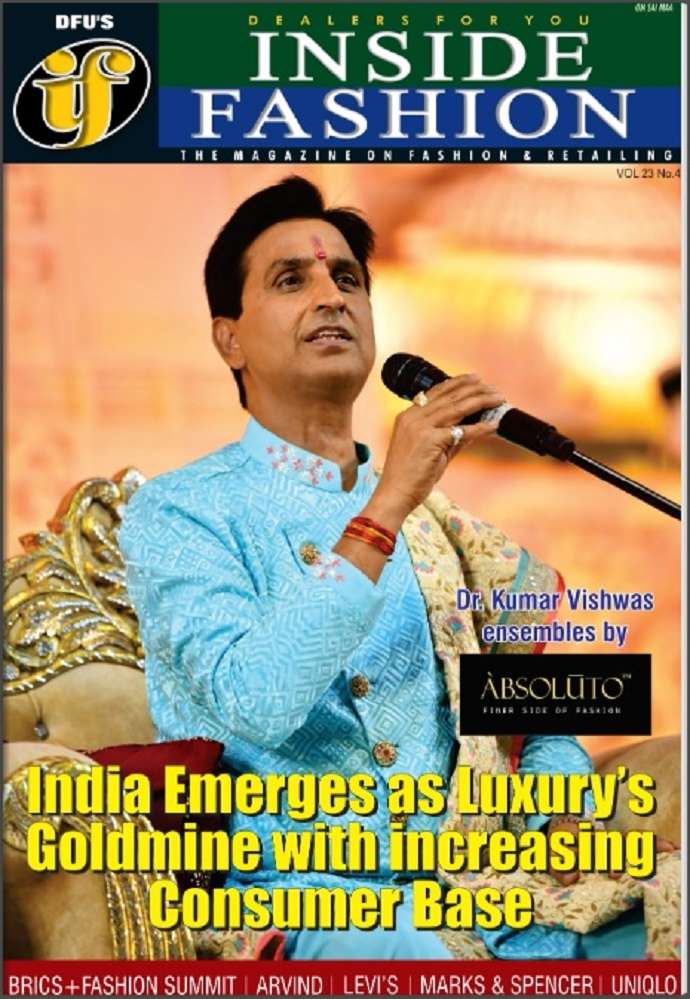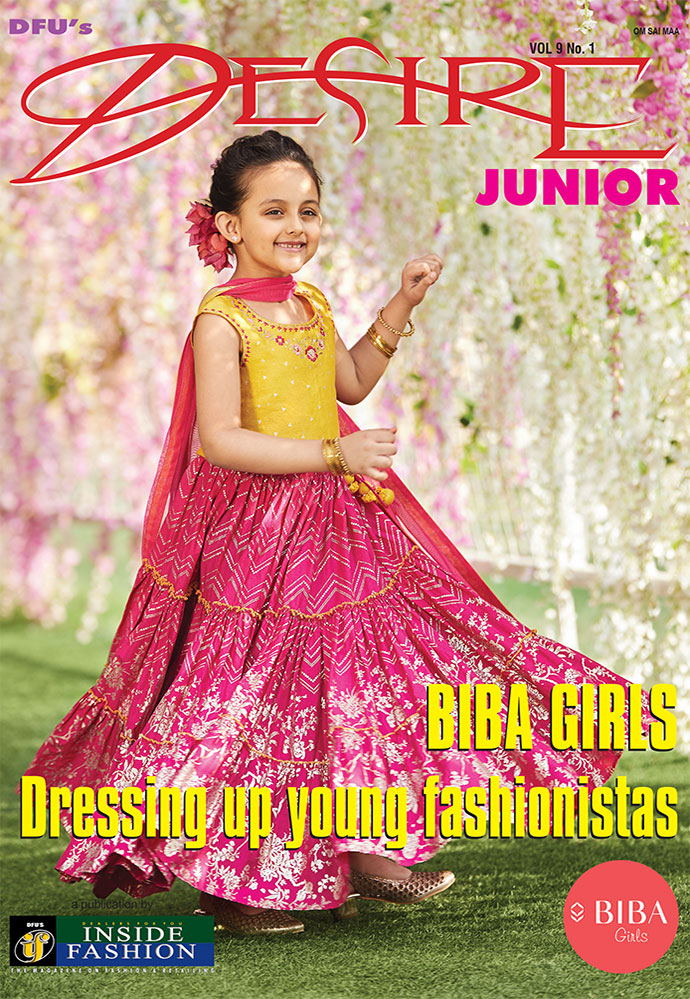From Cribs to Catwalks: The meteoric rise of India’s kid’s wear market

28 July 2025, Mumbai
In a country where over 360 million children fall under the age of 14, it's no surprise that India’s kid’s wear market is no longer playing dress-up. It has grown into a high-stakes segment within the country’s thriving fashion industry, riding on a wave of demographic advantage, rising incomes, and a generational shift in parenting.
As parents become more style-conscious and digitally connected, kid’s wear is no longer an afterthought—it’s at the center of retail strategies and fashion innovations.
Read our latest issue
From major cities to small-town India, the demand for comfortable, stylish, and even eco-conscious children’s clothing is rewriting the rules of the game. And while the consumers may be pint-sized, the market potential is anything but.
How big is the kid’s wear opportunity?
The numbers speak for themselves. Multiple industry estimates place India’s kid’s wear and children's apparel market is growing and how. While the actual figures vary depending on methodology, one consensus is clear—India’s kid’s wear industry is on a sustained growth path for the next decade.
Take the India Kids Apparel Market, which stood at $24.56 billion in 2024 according to TechSci Research. It's projected to touch $29.35 billion by 2030, at a CAGR of 3.01 per cent. Another analysis from the IMARC Group pegs the broader children’s wear market at $27.20 billion in 2024, forecasted to be worth $38.70 billion by 2033 at a CAGR of 3.60 per cent.
‘India Kidswear Market’ by Allied Market Research values it at $12.6 billion in 2023, projecting growth to $23.2 billion by 2034 with a CAGR of 5.8 per cent (2024-34). Apparel remains the dominant product type within this market.
Here’s how the leading market estimates stack up.
Table: India’s kid’s wear market size and projections
|
Metric (Source) |
Market size 2023-24 ($ bn) |
Projected market size ($ bn) |
CAGR |
Projection period |
|
|||
|
India Kids Apparel Market (TechSci Research) |
24.56 (2024) |
29.35 |
3.01% |
2025-2030 |
||||
|
India Children's Wear Market (IMARC Group) |
27.20 (2024) |
38.7 |
3.60% |
2025-2033 |
||||
|
India Kidswear Market (Allied Market Research) |
12.6 (2023) |
23.2 |
5.80% |
2024-2034 |
||||
|
India Kidswear Market (IMARC Group - Apparel) |
10.60 (2024) |
16.6 |
5.11% |
2025-2033 |
||||
“We’ve seen double-digit growth in many Tier II and Tier III cities. Parents are investing more, not just in fashion, but in perceived comfort and wellness for their children,” says Ravi Ahuja, VP of Consumer Insights at Kidstyle India.
Online convenience vs offline trust
Despite the e-commerce boom, offline channels still dominate India's kid’s wear distribution space —accounting for nearly 60 per cent of sales in 2024. Department stores, exclusive brand outlets (EBOs), and multi-brand retail continue to serve as trust anchors for cautious Indian parents, who often prefer a tactile shopping experience for their little ones.
But that status quo is changing rapidly. Online retail, spearheaded by platforms like Amazon, FirstCry, Hopscotch, and Myntra, is growing at a CAGR of 7.8 per cent, thanks to digital penetration in smaller cities and the explosion of D2C brands. “E-commerce has given us visibility far beyond metros.
Today, a parent in Kanpur or Hubli can shop the same styles available in Mumbai or Delhi,” says Sonal Jain, Co-founder of Kidbea, a D2C brand specializing in organic babywear.
Growth triggers
At the heart of the kid’s wear market growth is a unique amalgamation of economic, demographic, and cultural forces.
Rising disposable incomes and growing middle-class means more financial muscle for fashion-forward spending, even in segments like kid’s wear that were once purely functional. Urbanization and global exposure is another trigger as parents in urban areas are now more exposed to international trends and seek fashionable clothing for their kids that mirrors global style cues. “Earlier, kids wore what was bought. Now, they have preferences, opinions, and Instagram profiles,” quips Megha Verma, VP of Marketing at Hopscotch.
What’s more with one of the world’s largest child populations, the market has a built-in runway for demand. And cultural events drive demand. Festivals, weddings, birthdays, and school events offer recurring demand cycles for ethnic, occasion, and formal kid’s wear.
Another major catalyst is social media and brand influence. From YouTube moms to Instagram shops, parenting and fashion have become social signifiers, amplifying demand for premium and branded clothes. Meanwhile eco-conscious millennial and Gen Z parents are increasingly choosing organic cotton, toxin-free dyes, and ethically made clothes for their children.
Not all smooth sailing
As attractive as the growth story is, the kid’s wear segment also has its fair share of challenges. Price sensitivity is an issue especially in rural and semi-urban markets where consumers remain highly price-conscious.
Also, the influx of local, global, and online-only brands has created a fragmented battlefield. Supply chain bottlenecks is another issue as ensuring timely delivery across India’s vast geography is no small feat. Fluctuations in fabric prices, especially cotton, can erode margins.
The brandscape, who is leading
From homegrown veterans to global giants and agile D2C players, India's kid’s wear market is crowded but creatively vibrant. What unites the winners is adaptability—whether in terms of channel strategy, product innovation, or customer engagement.
Table: Core strategies, strengths, and positioning of various brands
|
Brand/platform |
Core strategy |
Strengths |
|
Gini & Jony, Max Kids |
Strong offline, expanding into digital |
Trusted legacy, value pricing |
|
Zara Kids, H&M Kids |
Premium global fashion |
Fast fashion cycles, urban trend appeal |
|
FirstCry, Hopscotch |
Online-first, vast assortment |
Convenience, scale, nationwide reach |
|
Kidbea, Nino Bambino |
Organic/niche positioning |
Eco-conscious appeal, D2C efficiency |
|
Mini Klub |
Started offline, expanding into online D2C |
Affordable fashion, omnichannel growth |
Brands are also pushing beyond traditional product categories. Apparel is being bundled with matching accessories, footwear, and even curated "gift sets." Some, like Zip Zap Zoop, endorsed by actor Shilpa Shetty, are using celebrity power to create emotional resonance with parents. “For us, omnichannel is not a trend—it’s survival. The Indian shopper still values touch-and-feel, especially for kids,” explains Amit Maheshwari, Retail Head at Mini Klub.
What’s next for kid’s wear in India?
The market is not just riding a growth wave—it’s setting the stage for a transformation. As the sector matures, new trends will redefine how Indian children dress, and how parents shop.
One of the most exciting frontiers lies in personalized shopping experiences. With advancements in AI, parents may soon enjoy AI-powered style recommendations tailored to their child’s personality, smart sizing technologies that eliminate guesswork, and even garments embroidered with the child’s name—adding a sentimental touch to everyday fashion.
Another visible shift is the rise of gender-neutral clothing, especially among urban consumers. As societal norms evolve and parents increasingly adopt progressive attitudes, more brands are designing collections that eschew traditional pinks and blues in favor of inclusive, unisex aesthetics.
At the same time, athleisure and functional wear are becoming staples in children’s wardrobes. From breathable fabrics to stretchable designs, the focus is on comfort without compromising on style. “Comfy is the new cool, even for kids,” say many designers riding this trend.
Smarter subscription models are also entering the fray, catering especially to parents of infants and toddlers who often outgrow clothes in mere weeks. By offering curated clothing boxes on a monthly or seasonal basis, these services promise convenience, value, and sustainability.
Perhaps the most powerful engine of change will be the expansion into India’s Tier II, III cities. As disposable incomes rise and fashion awareness deepens beyond the metros, regional markets are emerging as vital growth hubs for kid’s wear brands looking to scale. “In India, kid’s wear is not just about dressing children,” observes Mumbai-based apparel analyst Sandeep Nanda. “It’s about how a generation of parents express care, aspiration, and culture—one outfit at a time.”
























